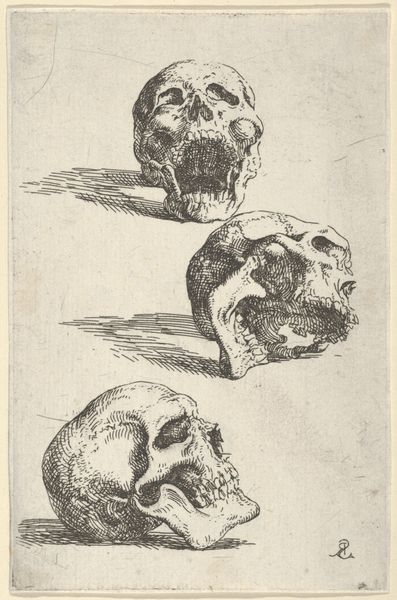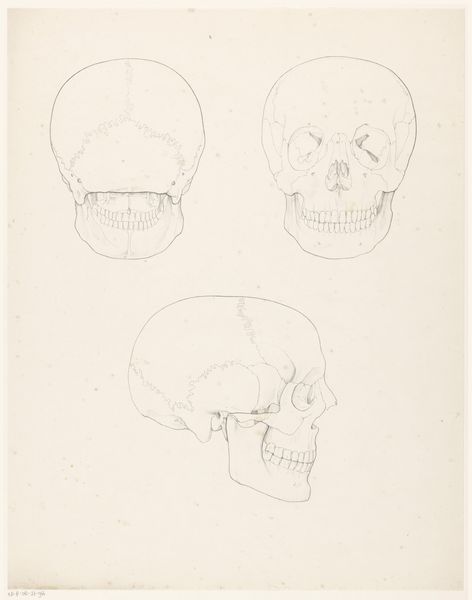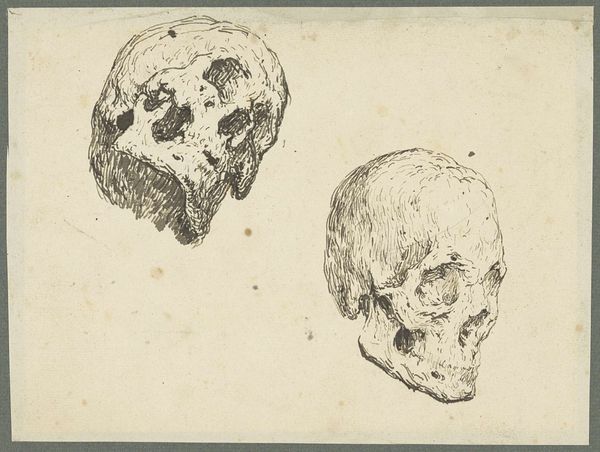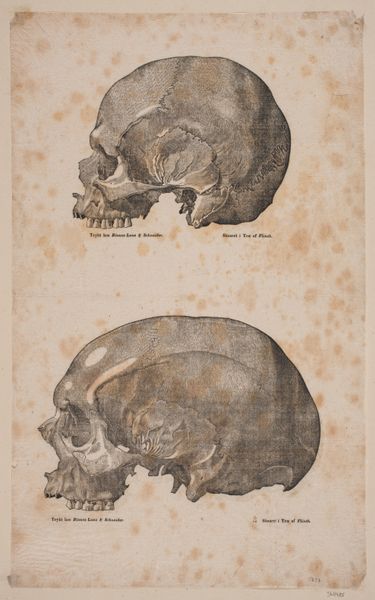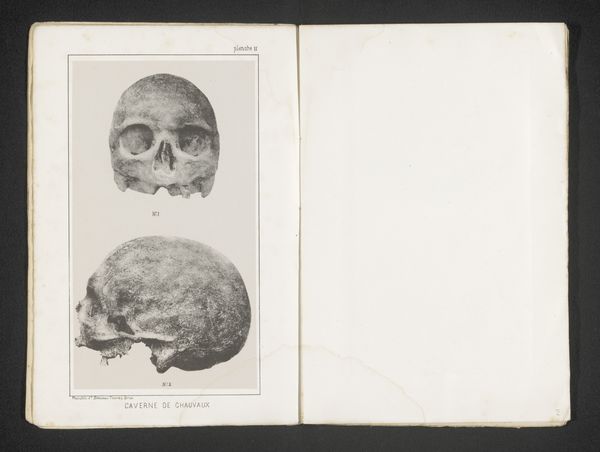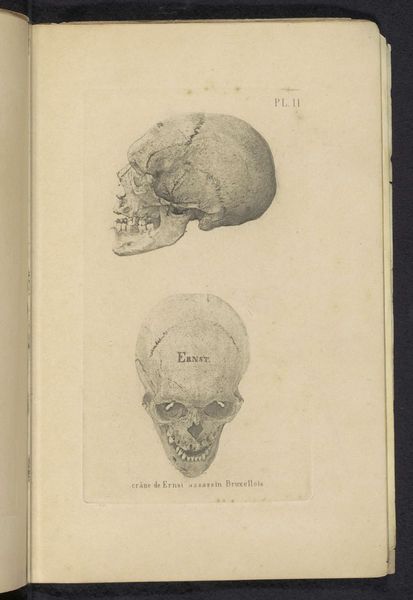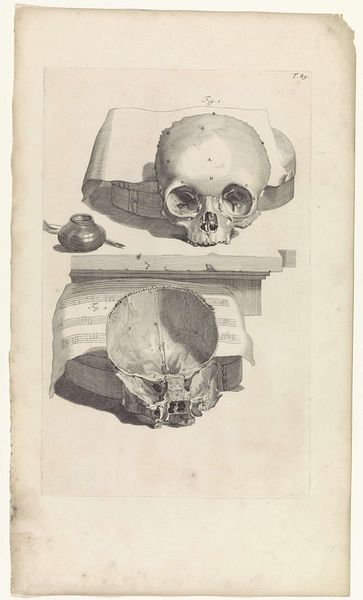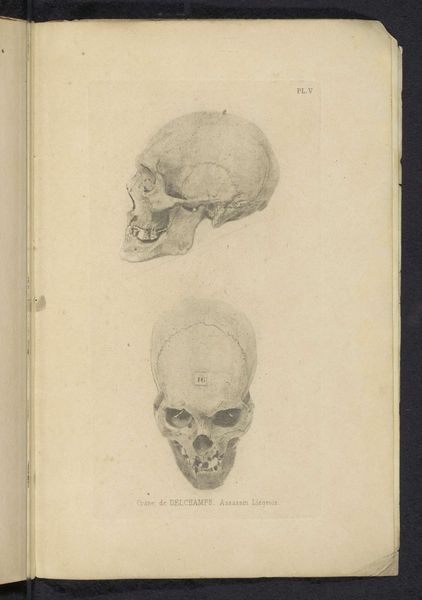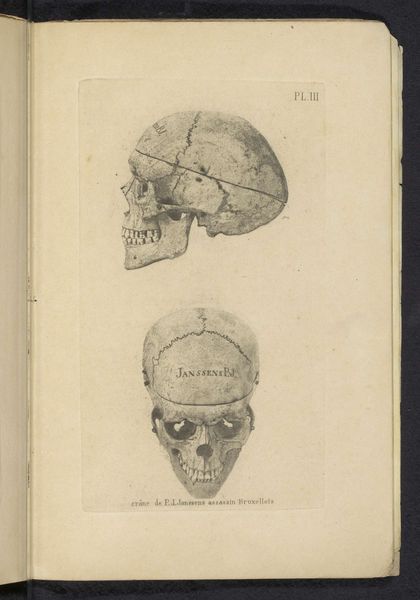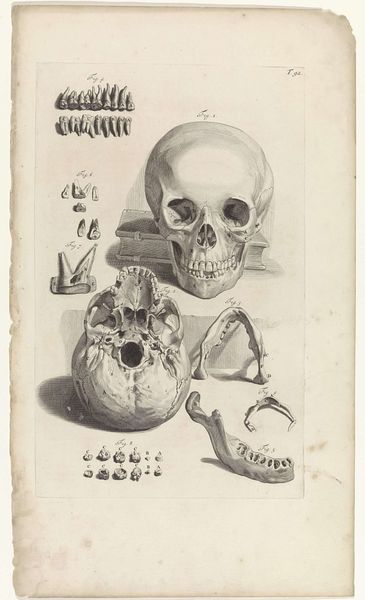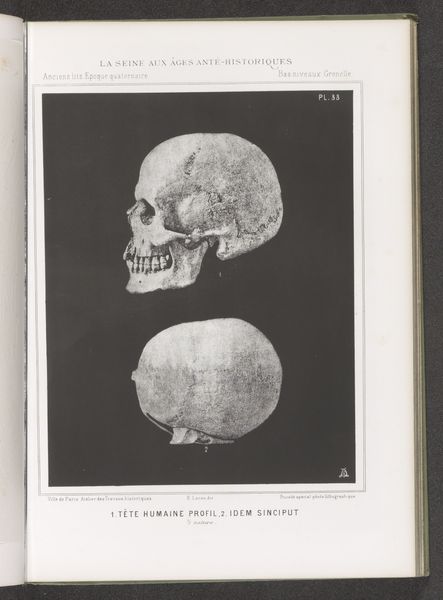
print, engraving
# print
#
engraving
Dimensions: 285 mm (height) x 211 mm (width) (bladmaal)
Curator: Today we are examining a print by Heinrich Hansen from 1858, titled "Kongegravene i Ringsted Kirke". Planche XIV, which translates to "The Royal Tombs in Ringsted Church, Plate XIV." The work resides at the SMK, the National Gallery of Denmark. It presents a series of engraved skull studies. What are your initial impressions? Editor: The meticulous detail is quite striking, and I’m immediately drawn to the technical craft here. Engraving such fine lines on metal to achieve this level of anatomical representation speaks volumes about the skills and labor invested. But more practically, how did Hansen access these materials for the engraving plate? The tools must have been exceptional. Curator: Indeed. Notice how the artist meticulously renders the texture and contours of the bone, utilizing hatching and cross-hatching techniques. Also, consider the implied lines tracing sutures, the orbits framing a cavernous darkness. It is this dedication that adds so much visual information and intrigue. I wonder if this arrangement, each angle considered and perfectly spaced, suggests some commentary about how history can dissect its past, fragmenting kings for observation. Editor: Fascinating point. However, I see it more simply: in his meticulous, even clinical approach to reproducing the skulls of presumed royalty, it highlights the social context within archaeological research and anthropological practices in the mid-19th century. The tools themselves might suggest how deeply scientific positivism might influence Hansen’s artistic lens. Curator: That’s a compelling suggestion. Each perspective reveals different characteristics of the skull—front, side, and top. It almost deconstructs the regal head. We can speculate if there's commentary or simply presentation on these structures, as semiotic markers of authority. Do we find traces of kingly signifiers in bone structure? Or a desire for universal understanding of the physical self, freed from hierarchy. Editor: It's intriguing to consider the accessibility and distribution of this print, who could afford to buy or access an engraving in this style? Consider the working life of Heinrich Hansen and what conditions enabled this material outcome to be produced at that particular time. The socio-economic value then is completely different now as an artwork for examination. Curator: A good point, that engraving ensured a relatively broader audience beyond an individual painting would have. For me, the work still holds that tension. Even after decades after production it serves as reminder to ponder history. Editor: And also, as an exercise of careful material production. Both thought-provoking angles when we consider artistic interpretation in broader scope.
Comments
No comments
Be the first to comment and join the conversation on the ultimate creative platform.

